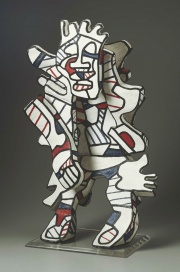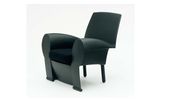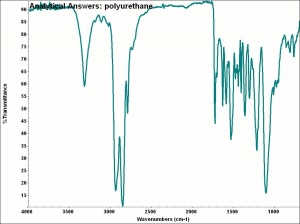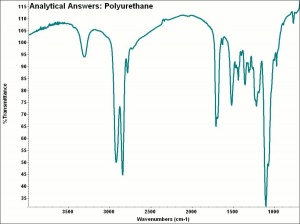Difference between revisions of "Polyurethane"
| Line 10: | Line 10: | ||
! Types!!Properties!!Forms!!Characteristics!!Uses | ! Types!!Properties!!Forms!!Characteristics!!Uses | ||
|- | |- | ||
| − | |Poly'''ether''' urethane|| thermoset || flexible open cells || lightweight, resistant to | + | |Poly'''ether''' urethane|| thermoset || flexible open cells || lightweight, resistant to water, allows vapor penetration, larger bubbles, less expensive||speaker foam, aquarium filters, patio cushions, foam padding, mattresses |
|- | |- | ||
| − | |Poly'''ester''' urethane|| thermoset || flexible open cells || lightweight, resistant to | + | |Poly'''ester''' urethane|| thermoset || flexible open cells || lightweight, resistant to solvents, allows vapor penetration, smaller bubbles||packing foam, insulation, soundproofing, shock absorption, pink anti-static foam, mops, sponges |
|- | |- | ||
| − | |Poly'''ether''' urethane|| thermoset || rigid closed cells || dense, resistant to | + | |Poly'''ether''' urethane|| thermoset || rigid closed cells || dense, resistant to water, less expensive|| thermal and moisture insulation, vapor barriers, tool making, wood replacement |
|- | |- | ||
| − | |Poly'''ester''' urethane|| thermoset || rigid closed cells || dense, | + | |Poly'''ester''' urethane|| thermoset || rigid closed cells || dense, resistant to solvents||thermal and moisture insulation, vapor barriers, tool making, wood replacement |
|- | |- | ||
|Poly'''ether''' urethane|| thermoplastic (PUR) || soft to rigid || textiles, upholstery, elastane | |Poly'''ether''' urethane|| thermoplastic (PUR) || soft to rigid || textiles, upholstery, elastane | ||
Revision as of 13:03, 4 July 2020
Description
A family of polymers made by a condensation reaction of an organic isocyanate with a compound containing a hydroxyl group, such as glycol. Polymers of this type (ester type) were first made in 1937 by Otto Bayer at I.G.Farben. During W.W.II, Germany made brush bristles and filtration fabrics from Perlon U, an early polyurethane. In the 1950s another type of polyurethane using an ether starting compound (ether type) was used to produce elastomeric polyurethane fiber called spandex. Spandex has elastic characteristics similar to Natural rubber. In addition to fibers, elastomeric polyurethanes are used for sealants, adhesives, films, and automobile bumpers. Polyurethanes can be rigid or soft, thermosetting or Thermoplastic. Additionally, they react with isocyanates to produce a foamed resin. Polyurethane resins are also used as coatings where they provide excellent hardness, Gloss, and resistance to Weathering, Abrasion, acids, and alkalis. Flexible and rigid polyurethane foams are used for insulation, furniture, mattresses, laminates, carpet cushions, upholstery, soundproofing, flotation devices, packaging, and filtration.
| Types | Properties | Forms | Characteristics | Uses |
|---|---|---|---|---|
| Polyether urethane | thermoset | flexible open cells | lightweight, resistant to water, allows vapor penetration, larger bubbles, less expensive | speaker foam, aquarium filters, patio cushions, foam padding, mattresses |
| Polyester urethane | thermoset | flexible open cells | lightweight, resistant to solvents, allows vapor penetration, smaller bubbles | packing foam, insulation, soundproofing, shock absorption, pink anti-static foam, mops, sponges |
| Polyether urethane | thermoset | rigid closed cells | dense, resistant to water, less expensive | thermal and moisture insulation, vapor barriers, tool making, wood replacement |
| Polyester urethane | thermoset | rigid closed cells | dense, resistant to solvents | thermal and moisture insulation, vapor barriers, tool making, wood replacement |
| Polyether urethane | thermoplastic (PUR) | soft to rigid | textiles, upholstery, elastane | |
| Polyester urethane | thermoplastic (PUR) | soft to rigid | skate wheels, safety helmets |
Synonyms and Related Terms
PUR; poliuretano (Esp.); polyuréthane (Fr.); poliuretano (It.); poliuretano (Port.); spandex; elastane
Examples: Perlon® U [Ger.]; Lycra® [DuPont];
Applications
Personal Risks
Urethane burns with a bright flame producing a sharp odor and toxic fumes.
Fischer Fixing Systems: [Safety Data Sheet]
Collection Risks
Potential degradation products are hydrogen cyanide and ammonia.
Polyether type urethanes are very susceptible to light degradation.
Polyester type urethanes are very susceptible to degradation at high humidities.
Polyurethane foams can yellow, become brittle and crumble.
Chlorine bleach may cause degradation.
Physical and Chemical Properties
Coatings are resistant to weathering, abrasion, acids and alkalis.
Attacked by aromatic solvents, chlorinated solvents, ozone, and nitrogen oxides.
Spot test for detection: dimethyl amino benzaldehyde in glacial acetic acid - positive reaction gives bright yellow color (Roff et al 1971)
| CAS | 9009-54-5 |
|---|
Working Properties
Additional Information
W.J.Roff, J.R.Scott, J.Pacitti (compilers) Handbook of Common Polymers:Fibres, Gilms, Plastics and Rubber Cleveland: CRC Press, Butterworth & Co., 1971.
Links to Oddy Test results posted on AIC Wiki Materials Database Pages for individual materials below
water-based Polyurethane tested in 2003
Comparisons
Properties of Synthetic Fibers
Physical Properties for Selected Thermoplastic Resins
General Characteristics of Polymers
Sources Checked for Data in Record
- C&ENews Aug 2004 - first developed by Otto Bayer in 1937.
- Encyclopedia Britannica, http://www.britannica.com Comment: "Polyurethane." 18 Aug. 2004
- Marjorie Shelley, The Care and Handling of Art Objects, The Metropolitan Museum, New York, 1987
- Thomas C. Jester (ed.), Twentieth-Century Building Materials, McGraw-Hill Companies, Washington DC, 1995
- Michael McCann, Artist Beware, Watson-Guptill Publications, New York City, 1979
- Dictionary of Building Preservation, Ward Bucher, ed., John Wiley & Sons, Inc., New York City, 1996
- Sharon Blank, An introduction to plastics and rubbers in collections, Studies in Conservation, 35, 53-63, 1990
- M. Baker, E. McManus, 'History, Care and Handling of America's Spacesuits', JAIC, 31, 77-85, 1992
- Theodore J. Reinhart, 'Glossary of Terms', Engineered Plastics, ASM International, 1988
- Richard S. Lewis, Hawley's Condensed Chemical Dictionary, Van Nostrand Reinhold, New York, 10th ed., 1993
- The American Heritage Dictionary or Encarta, via Microsoft Bookshelf 98, Microsoft Corp., 1998
- Website address: www.me.umist.ac.uk.historyp/
- Art and Architecture Thesaurus Online, http://www.getty.edu/research/tools/vocabulary/aat/, J. Paul Getty Trust, Los Angeles, 2000



